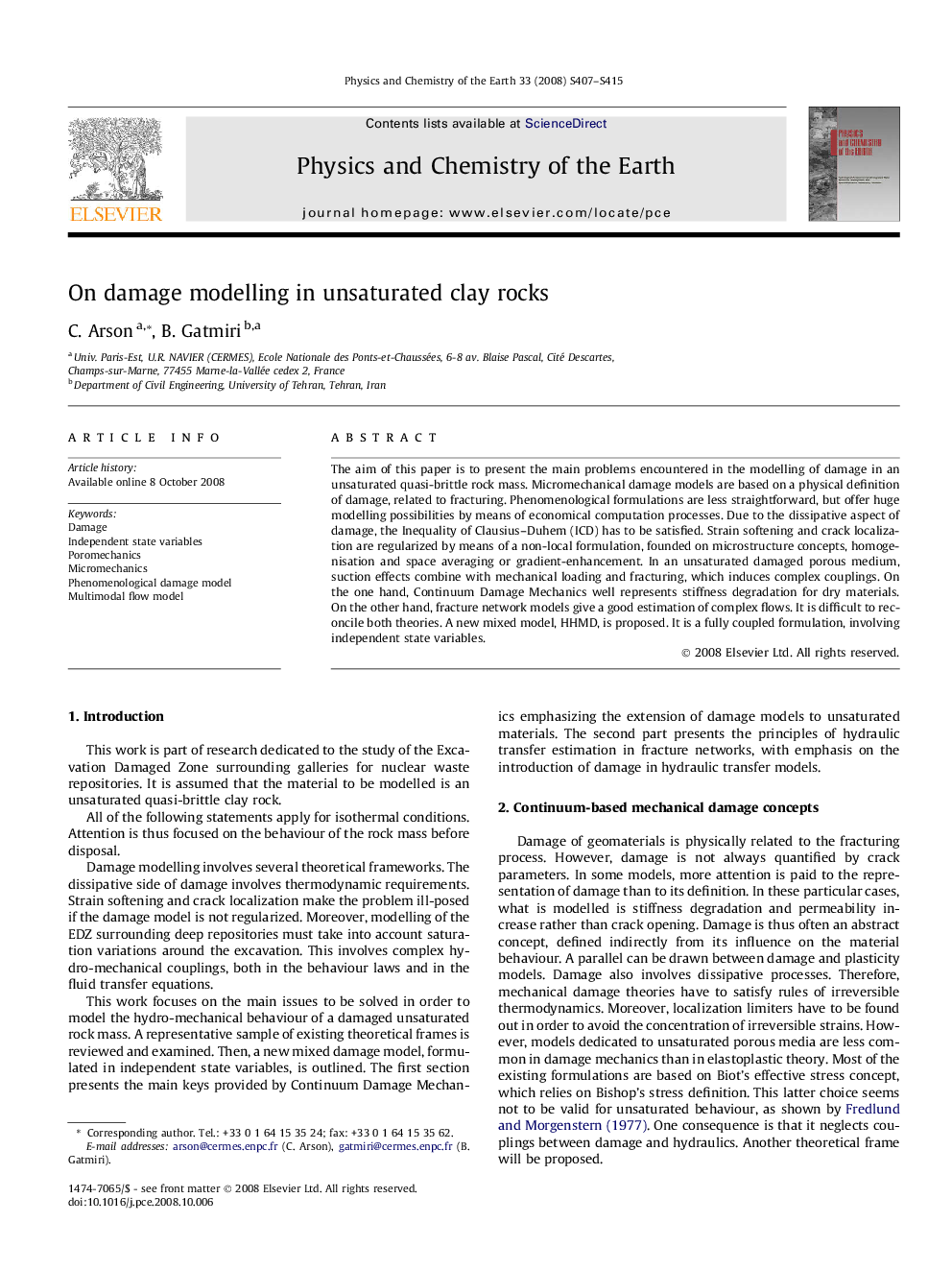| Article ID | Journal | Published Year | Pages | File Type |
|---|---|---|---|---|
| 4721648 | Physics and Chemistry of the Earth, Parts A/B/C | 2008 | 9 Pages |
The aim of this paper is to present the main problems encountered in the modelling of damage in an unsaturated quasi-brittle rock mass. Micromechanical damage models are based on a physical definition of damage, related to fracturing. Phenomenological formulations are less straightforward, but offer huge modelling possibilities by means of economical computation processes. Due to the dissipative aspect of damage, the Inequality of Clausius–Duhem (ICD) has to be satisfied. Strain softening and crack localization are regularized by means of a non-local formulation, founded on microstructure concepts, homogenisation and space averaging or gradient-enhancement. In an unsaturated damaged porous medium, suction effects combine with mechanical loading and fracturing, which induces complex couplings. On the one hand, Continuum Damage Mechanics well represents stiffness degradation for dry materials. On the other hand, fracture network models give a good estimation of complex flows. It is difficult to reconcile both theories. A new mixed model, HHMD, is proposed. It is a fully coupled formulation, involving independent state variables.
